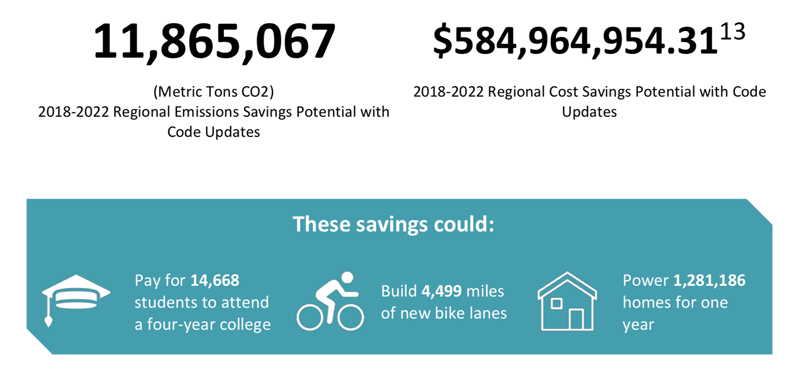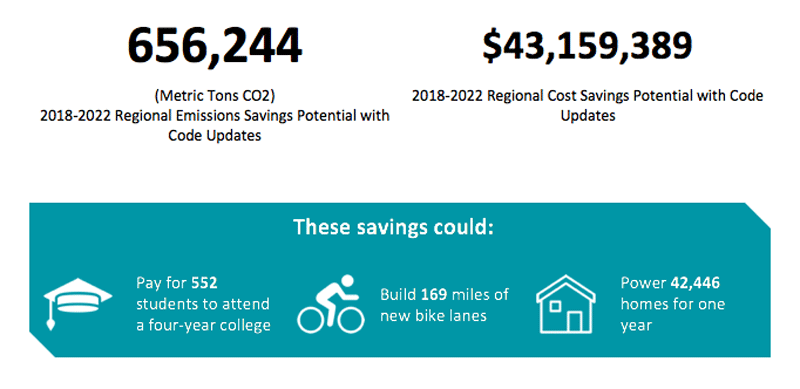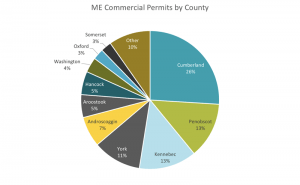When people bring up Bigfoot, they often cite evidence that lacks credibility. Yet even in the absence of tangible, physical proof of Bigfoot’s existence, people are still willing to embrace the beast as fact. This is how myths persist. The folklore of Bigfoot has not ceased in recent years and the same false narratives continue to be passed around the internet. Myths exist in every facet of our lives. From cryptid creatures like Bigfoot haunting our Pacific Northwest, to the notion that eating before swimming increases risks of muscle cramps, myths permeate our culture.
Myths even permeate the world of buildings codes. Recently, the Northeast Energy Efficiency Partnerships (NEEP) released a paper, Construction Codes in the Northeast: Myths and Realities of Energy Code Adoption and its Economic Effects, that looks at some of the most common myths in the buildings codes world.
The report analyzed construction permit data from 2014-2017 and coupled it with data that projects the square footage of both new residential and commercial building stock for the next five years in order to create a complete picture of the economic development of the building sector and identify opportunities states have for energy savings and economic growth by implementing more robust energy efficiency codes.
The Myth: Opponents of updated energy codes state that it will be too costly for builders, contractors, and homebuyers if updated energy codes are adopted. This is due to the perceived extra work, complexities, and materials needed to build to a new code. This myth persists with lack of evidence just like the story of our fictional hairy friend from the Pacific Northwest. .
The Reality: Luckily, we have the facts, data, and information available to prove that updated energy codes do not halt construction starts, and can in fact show the opportunities for deep energy savings. Energy codes are the only building codes that pay for themselves through occupant energy savings. Construction permit data tells the story of economic development, trends in building types and sizes, as well as trends in geographic location of construction projects by county. Using this information, NEEP shows that there is no correlation between updated energy code adoption and slowed down construction. Instead, the opposite is true. This information is useful for states, local governments, and other policymakers to target geographic centers of development for new energy efficiency initiatives, energy codes, or code compliance training programs.
States can take this information and use it to inform their energy code training programs. For instance, if it is clear that commercial construction is on the rise, an energy code compliance enhancement program can be tailored to meet the needs of the commercial sector, while locating those trainings in counties with higher development rates.

Savings estimated to be available in the Northeast and Mid-Atlantic states.
Projected additional square footage data has allowed us to determine the potential energy, cost, and greenhouse gas emissions savings for each state in the NEEP region to show the effectiveness of an updated energy code. The NEEP region stands to save $584,964,954.31 if every state from West Virginia to Maine updates to the latest energy code. These savings would be realized by renters, homeowners, property managers, businesses, and so many others who utilize and pay for energy.
Spotlight: Maine
Our analysis shows that Maine has the opportunity to realize significant savings from an updated commercial and residential energy code. Currently, Maine utilizes the 2009 International Energy Conservation Code (IECC), while all other codes were updated to the 2015 I-Codes, which includes fire, mechanical, and plumbing codes, in January of this year. These codes are published in conjunction with each other and are intended to go hand-in-hand to increase the safety and efficiency of Maine’s building stock.

Savings estimated to be available in the State of Maine.
Maine’s energy code also contains an amendment that states that any community with fewer than 4,000 people does not need to comply with the energy code. An updated energy code, without the <4,000 amendment, could help Maine realize huge savings, increased comfort for building occupants, and safer buildings overall.
With almost two-thirds of Maine households using fuel oil as a primary heating source, and an average January temperature high of 28 degrees Fahrenheit, the state’s residents would benefit greatly from tighter building envelopes and more insulation that would come with an updated energy code.

When designing an energy code compliance enhancement program to ensure the above-mentioned savings are realized, training is the key initiative that can help improve compliance rates. If Maine updates its energy code, a training campaign could be deployed to counties of increased building development. For example, Cumberland County contains 26 percent of all commercial building developments. Commercial energy code trainings could be targeted to this area in order to reach a maximum number of builders, architects, building officials, and energy code offices.
Key Takeaways
- Updating state energy codes does not contribute to any slowdowns in construction activity.
- An updated energy code creates opportunities for increased cost, energy, and greenhouse gas emissions savings.
- Construction permit data, both residential and commercial, across the NEEP region shows that we are increasing the square footage of conditioned space, making energy code updates critical in helping states reach their goals, including:
• Utility load reductions
• Increased resiliency during extreme weather events like hurricanes and superstorms.
Christina Rohrbacher is High Performance Buildings Associate at NEEP. This post was originally published on the NEEP Blog.


Brandon De Young says:
As a leading energy efficient home builder, I can tell you firsthand that increasing energy efficiency does, in fact, increase my direct construction costs. More insulation costs more than less insulation. Higher efficiency water heating and HVAC equipment costs more than less efficient equipment.
However, just because my costs increase does not mean my sales will decrease. Sales pace is highly dependent upon real estate market conditions. For example, if it happens to be a good market at the time my costs increase, then I can increase my home prices. Whether I can increase them enough to cover the cost increases depends on what the real estate market will allow (buyer demand), and that is what will determine if I can remain profitable or not.
As you can see, if costs increase too much at the wrong time then I will not be profitable and will eventually go out of business. Not good… Not good for anyone.